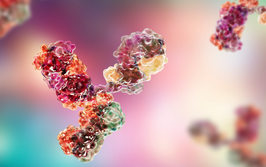
The Industry Strikes Back
How digital technologies are helping to secure the pharmaceutical supply chain
Chinks in the pharmaceutical industry’s armor have allowed fake and counterfeit drugs to become a significant problem. Here, we speak to Bright Simons, President at mPedigree, a social enterprise building a new ecosystem to fight fake medicines, to find out how digital technologies combined with pharma packaging schemes are helping to address the problem.
mPedigree uses mobile and web technologies to help secure pharmaceuticals against counterfeiting and diversion. Manufacturers can upload pedigree information about their products onto a centralized registry that works as an item-level traceability and serialization platform, helping to facilitate communication among stakeholders in the supply chain. Patients can then verify whether their medicines are genuine products by sending a one-time-use password, which is attached to pharmaceutical packaging, to toll-free short codes set up with telecom companies across Africa and Asia. There are 2D barcode and other optical variants of this process.
According to mPedigree, the counterfeit pharmaceutical market is worth an estimated $70 billion each year. The scale of the problem prompted mPedigree to partner with more than two-dozen telecom operators, Fortune 500 technology companies, and regulatory agencies in several countries to fight back against.
What challenges does the supply chain face?
Grey marketing and a lack of specialized incoterms has resulted in confusion over laws and standards from country to country. At a regional level, such as in Africa and South Asia where mPedigree does most of its work, this has led to fragmented data management and surveillance initiatives, which can create opportunities for counterfeiting or product diversion. A number of solutions have been adopted to combat the counterfeit problem, such as DAVA (Drugs Authentication and Verification Application) in India and MAS (Mobile authentication service) in Nigeria. The majority of francophone countries in Africa use programs backed by French agencies, which makes clear channels of communication limited and also poses challenges with interoperability.
Getting small and medium-scale enterprises -- as well as the heavily under-resourced public agencies -- across Africa and South Asia on board with supply chain initiatives requires the creation of “local bridges” to global standards. Very few investments are going into such bridges, however. Another issue is that there is a misguided view that simply assembling regulators and issuing laws will automatically elevate small fragmented players into a neat assembly of actors for seamless interoperability. This is completely wishful thinking.
GS1, a not-for-profit organization best known for creating standards for barcodes, offers the global community a way forward when it comes to interoperability. Unfortunately, true harmonization requires considerable local stakeholder integration. In addition, standards are, above everything else, knowledge systems, and knowledge systems are often tacit and hard to circulate without serious investment and agency.
How are digital technologies helping to fight fake medicines?
Simply put, they provide connectivity. No other systems are as effective as digital when it comes to bringing together different stakeholders. When fake, expired, counterfeit, or otherwise misrepresented packages are detected in the supply chain, our question is always - “What’s next?” Who assumes responsibility? Who is trusted to provide reassurance? What about remediation? How is the information from each detection to be used to improve the system as a whole and prevent others from falling victim to the same source of that anomaly? Digital technologies offer us all the tools we need to facilitate the real-world partnerships needed to solve the problem of fakes holistically by enabling connections among industry, retailers, wholesalers, consumers, regulators, independent institutional observers and regulators/law enforcement authorities. Any other method is simply far too expensive.
Without digital interconnectivity, and in the context of thousands of brand-specific anti-counterfeiting protocols, room is created for counterfeiters to create their own fake safety protocols and attach them to fake products. Digital is our only hope to close the loop and fix the gaps.
How is mPedigree helping to address the problem?
At mPedigree, we rely on digital technologies to bind stakeholders together for a more transparent and interoperable supply chain system.
We use a direct to consumer model, which allows patients and customers to:
- log medicines at the tail end of the distribution
- provide unit-level feedback
- provide their opinions on pharmacovigilance
- help curate market intelligence by labelling data points provided in-app
- close the track-and-trace chain by authenticating the serialisation ID on the medicine pack
Beyond technology, we also work to design protocols and influence legal-regulatory mechanisms. Our Goldkeys platform (which brings a set of mobile and web tools together in one platform to provide brand owners with real-time control of key events in the supply chain) and related technologies are used by regulators to plan compliance roadmaps both at the aggregate level and in an individualized, client-based manner.
Ultimately our goal is to fight back against misconceptions in mainstream thinking by working with partners around the world to demonstrate the power of ecosystemic solutions.
After finishing my degree, I envisioned a career in science communications. However, life took an unexpected turn and I ended up teaching abroad. Though the experience was amazing and I learned a great deal from it, I jumped at the opportunity to work for Texere. I'm excited to see where this new journey takes me!



















